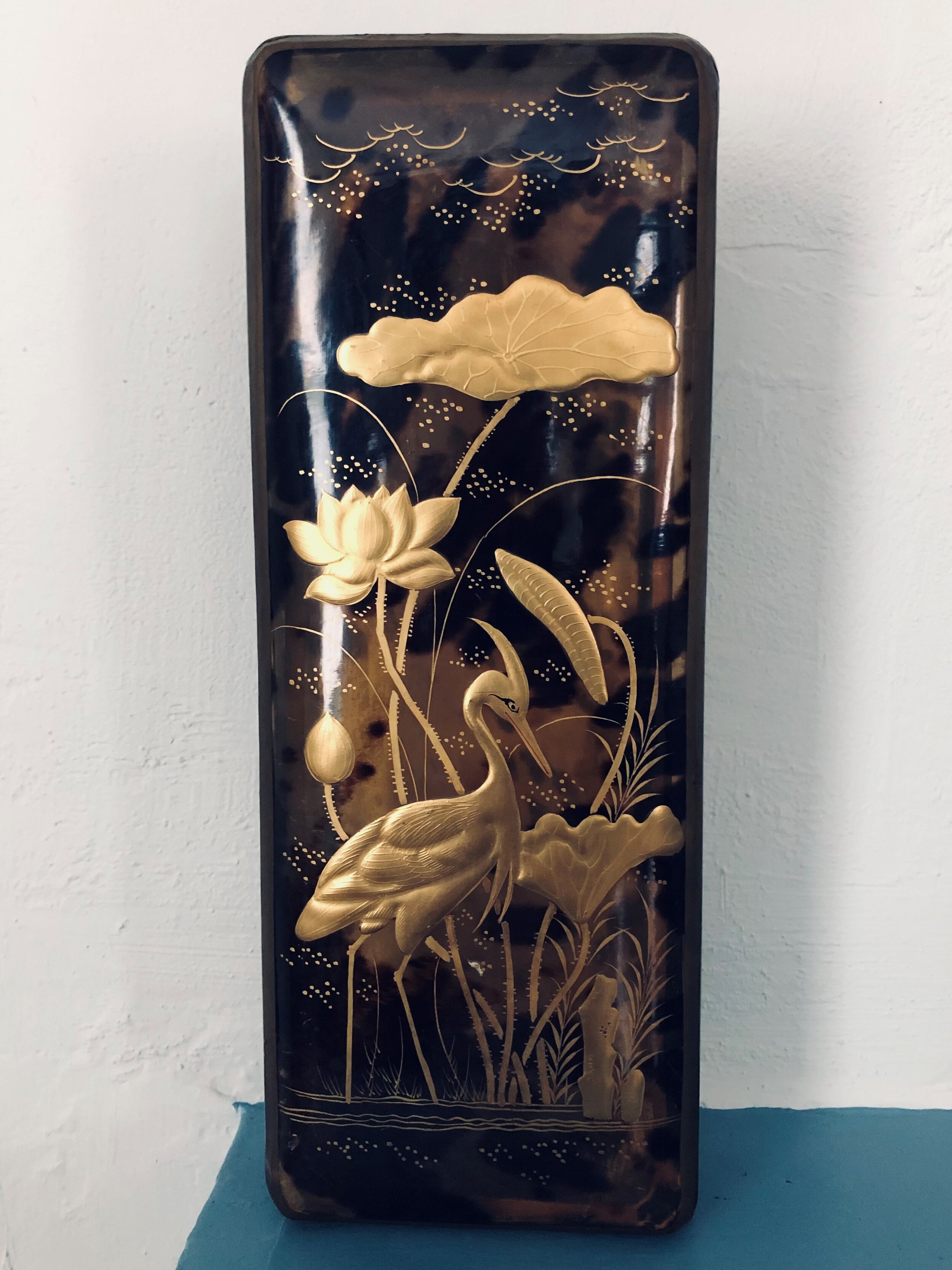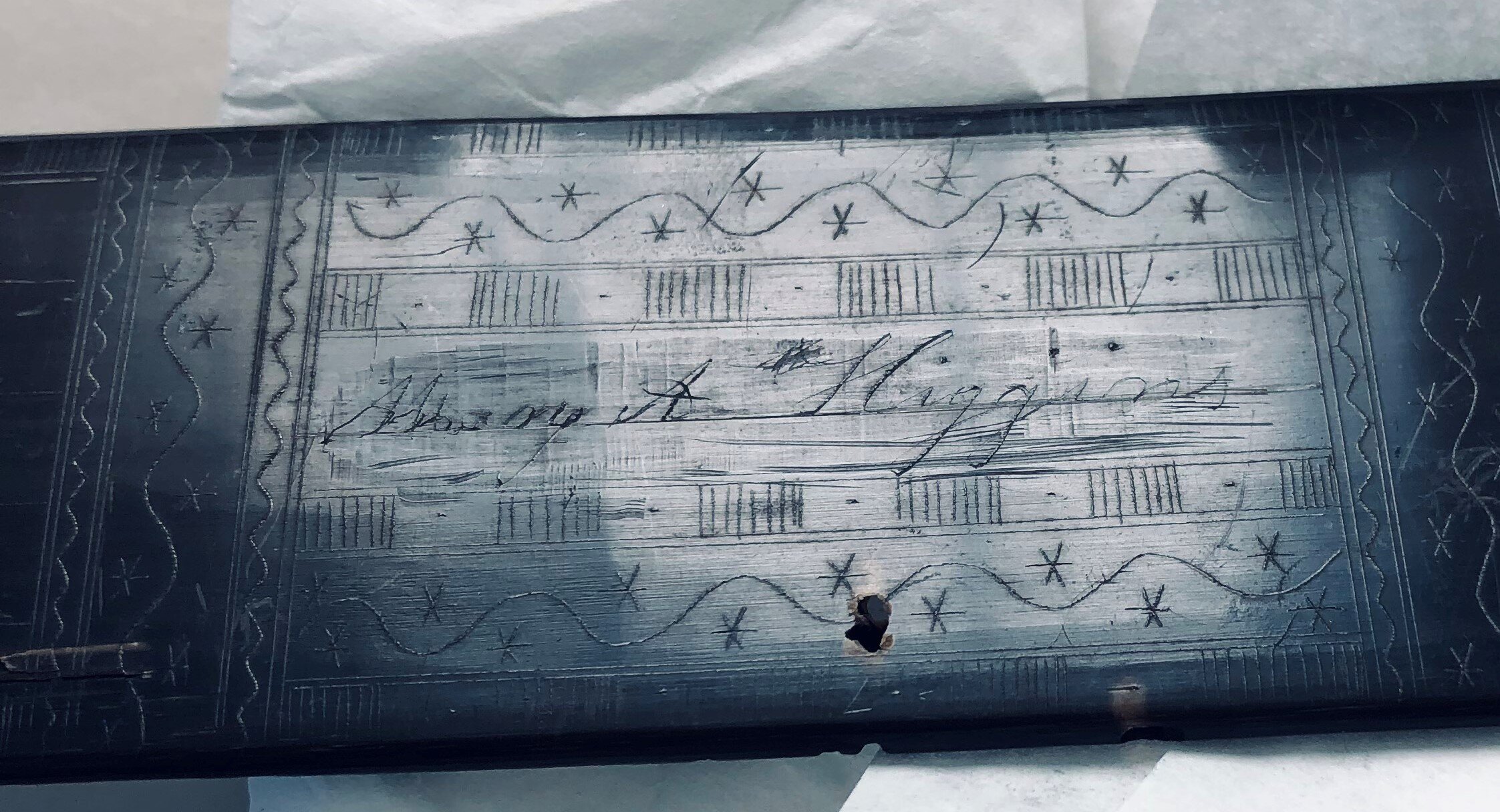New Englanders are all familiar with cold weather and skating on frozen ponds, and in particular on Cape Cod, skating on frozen cranberry bogs. Margot Fitsch recalls in her oral history on our YouTube channel, “parents preferred the bogs as you couldn’t fall through very deep.”
Read moreIn the Attic - Chinese Skull Cap
Vintage Chinese silk cap is in very good condition with some very fine embroidery work on the black panels. The circular, gold symbol is believed to be “Luck.” A top knot with a tassel completes the design. Most likely purchased in a Chinese port as an early souvenir by a Brewster family member while abroad.
Read moreIn the Attic - Camphor Campaign Secretaire Chest
The Chinese camphor chest sprang up in 18th or 19th-century China as a highly-functional and decorative art piece. While it is possible to find chests from the 18th century, most available ones were produced in the 19th century.
Read moreIn the Attic - Snappit Point
Brewster Namskaket Arrowhead known as a Snappit Point. These points date from the Middle Archaic to Late Archaic period, between 6,000 - 8,000 years old.
Read moreIn the Attic - Ouija Board
What better way to have fun on a dark solstice evening than lighting a few candles and playing the Ouija Board?
Read moreIn the Attic - Portrait of Captain Freeman H. Bangs
Portrait of Captain Freeman H. Bangs. Born in Brewster, November 1, 1809, Bangs commenced going to sea as a boy. In 1836, he had command of the brig Roxanna in the Mediterranean trade.
Read moreIn the Attic - Satucket Map 1795
In 1694 “The Satucket Lands” as they were then called were incorporated as the Town of Harwich. They ran from Namskaket Marsh (then the bound for Eastham) to Quivet Creek (then the bound for Yarmouth) and from “sea to sea” (Nantucket Sound to Cape Cod Bay). This 1795 map shows Harwich before the 1803 divide separating Brewster from Harwich.
Read moreIn the Attic - Shellwork Bouquet
This is a Shellwork bouquet (coquillage) c. 1850. Its medium is shells (coquillage), blown glass, walnut.
Read moreIn the Attic - Portrait Jewelry
Susan Griffith Bangs 1809-1850
Close up images of jewelry pieces from the Sea Captains oil portraits currently on display at the Captain Cobb House Museum.
Read moreIn the Attic - Milk Bottle
Where I grew up in Brewster in the 1950s, there was a dairy farm in our neighborhood. Ollie Lund ran a herd of maybe 15-20 cows, mostly Holsteins and Guernseys just off Main Street…
Read moreIn the Attic - Zither
Eliza May Chase Foster of Stoney Brook Road, Brewster, enjoyed playing this instrument as well as a pump organ in her home.
Read moreCamp Mail. Who needs an address?
A 1957 envelope addressed to a Brewster Camp Wono cabin, 2nd on right, using a skillfully drawn map of the delivery location. The United States Postal Service processed this envelope all the way from Hartford CT to the happy camper residing in Brewster using a non-traditional method of address.
Read moreIn the Attic - Chinese Embroidery
As another contribution to Asian American and Pacific Islander Month from our collection I thought of these beautiful clothing articles from China.
Read moreIn the Attic - Japanese Fubako or Letter Box
Thinking about Asian American and Pacific Islander Month I thought of this elegant letter box from Japan.
Read moreIn the Attic - Scrimshaw Stay Busk
Scrimshaw Stay Busk made by Adnah Rogers, Jr. for Mary A. Higgins, BHS 1111.483
This lovely bone busk is engraved is engraved with flower designs and poetry. The carver has added palm trees and American flags together, intimating the distant reach he has traveled with his ship. C. 1850-1890
Read moreIn the Attic - Exploding Harpoon
Mantel display, Cobb House Museum Best Parlor. Purchased from the Ruth Nickerson Eddy Estate, 2005.18.11.
It is suggested that the exploding harpoon was invented by Captain Charles Freeman, a Brewster sea captain. The harpoon has a patent stamp “May 7, 1873.” Born June 15, 1822, died Brewster 1890. Capt. Freeman was a whaler sailing out of Stonington, CT.
Read moreIn the Attic - Women's Swim Suit
Vintage women's swim wear
In the upstairs East Gallery is a display of a Victorian woman’s swim suit. Compared with today’s beach fashions it looks hopelessly hot and heavy. To see what women had to endure to enjoy a refreshing day at the beach!
Read moreIn the Attic - Chinese Lotus Shoes
One of a pair measuring approximately 3.5 “, similar to an average deck of cards
These shoes, also known as lotus shoes, were made during the late 19th century for a Chinese woman with bound feet.
Read moreIn the Attic - Cape Verdean Immigration
Brewster ship captains sailing large trading vessels would stop at the Cape Verde archipelago in the central Atlantic Ocean to restock supplies. Cape Verdean men sometimes joined early trading ships as crew.
Read moreIn the Attic - Slave Enumeration Document
The c. 1890s game of Jackstraws is similar to today’s game of pick-up-sticks. Wooden “straws” shaped like farming implements are spread onto a table and players try to remove them one-by-one without disturbing the other straws. In addition to the jackstraws there is a “helper” piece with a hooked edge to help move the sticks about. Each stick has a point value (penciled onto it), one stick having faces on it; perhaps the most coveted one, for it indicates a point value of “50.” At game’s end, the player with the highest point tally wins.
Read more












